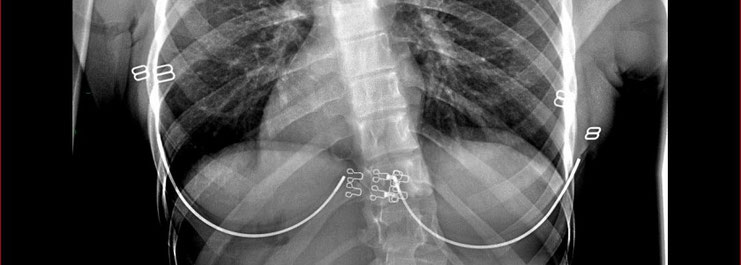Alexander Technique for Scoliosis

Scoliosis is a condition characterized by a lateral curvature of the spine. For those who experience it, scoliosis can be both physically challenging and emotionally distressing. The spine's asymmetry affects not only our appearance but also our overall health and comfort. While traditional treatments such as bracing and surgery are common, the Alexander Technique offer a less intrusive solution for managing scoliosis.
What is Scoliosis?
Scoliosis is a complex spinal deformity that can develop during childhood or adolescence, although it can also occur in adulthood. The curvature of the spine can range from mild to severe, and it may cause visible asymmetry in the shoulders, waist, and hips. Some individuals with scoliosis may experience pain, muscle imbalances, and limited mobility, while others may have minimal symptoms.
Types of Scoliosis:
- Adolescent Idiopathic Scoliosis: This form typically emerges during puberty, and its cause remains unknown.
- Other Variants: Scoliosis can also result from congenital factors, neuromuscular conditions, or degenerative changes.
The Double Whammy:
- Adolescents with scoliosis face a unique challenge. Just as they become self-conscious about their changing bodies during adolescence, the curvature of the spine adds an extra layer of complexity.
- The diagnosis can be shocking and isolating, especially when one feels unseen and unheard.
Beyond Cosmetics:
- While scoliosis can affect how clothes fit and how we perceive ourselves in the mirror, it's not merely a cosmetic issue.
- Muscles and ligaments compensate for the spinal asymmetry, leading to overuse or atrophy.
- Organs may be compressed or displaced, and one leg or shoulder may work harder than the other.
Traditional Treatments for Scoliosis
Traditional treatments for scoliosis typically focus on managing symptoms and preventing further curvature progression. Bracing is commonly prescribed for adolescents with moderate curvature to prevent it from worsening as they grow. In severe cases or when conservative measures fail, surgery may be recommended to correct the curvature and stabilize the spine.
The Alexander Technique: An Alternative Approach
The Alexander Technique is a holistic method that aims to improve posture, movement, and overall well-being by reeducating the body's coordination and alignment. Developed by Frederick Matthias Alexander, this technique emphasizes awareness of movement habits, support, and learning to release unnecessary tension.
Practicing the Alexander Technique involves working with a certified teacher who provides hands-on guidance and instruction tailored to the individual's needs. Sessions may include gentle manipulation, verbal cues, and movement exercises aimed at promoting better support and coordination.
In addition to formal lessons, you can integrate Alexander Technique principles into your daily activities.
How Does the Alexander Technique Help with Scoliosis?
If you have scoliosis, the Alexander Technique offers several potential benefits:
- Improved Posture: By increasing awareness of how the spine is supported and balanced, you can learn to optimize your posture, reducing strain on the spine and surrounding muscles.
- Enhanced Mobility: The Alexander Technique teaches gentle movements and adjustments that can help you move more freely and efficiently, reducing stiffness and discomfort.
- Reduced Tension: Those with scoliosis often stiffen their bodies to stabilize themselves. The Alexander Technique helps to release unnecessary tension and allows deep postural support muscles to work effectively.
- Increased Body Awareness: By becoming more attuned to your body's movements and habits, you can learn to identify and correct harmful patterns that contribute to scoliosis-related symptoms.
- Debauched Proprioception: Scoliosis affects neural pathways and your sense of self in space. Alexander Technique lessons help recalibrate your proprioception, providing a more accurate map of your body.
- Psychological Impact: Beyond physical adjustments, the technique positively influences mood and psychology. It counters the mechanistic, objectifying approach of some medical diagnoses.
Recommendations
- For Adolescents and Adults: If you have scoliosis, consider Alexander Technique lessons. They can help you find ease in movement, improve posture, and reduce pain.
- Parents' Perspective: Parents of children with scoliosis can benefit from the Alexander Technique. It provides an antidote to the clinical and often disheartening diagnosis process.
- Complementary Treatment: While mainstream medicine remains essential, the Alexander Technique complements it beautifully. For adults with no further treatment options, it can be life-saving.
While the Alexander Technique may not offer a cure for scoliosis, it can be a valuable tool for managing symptoms, improving posture, and enhancing overall well-being. By cultivating awareness, relaxation, and efficient movement, those with scoliosis can take an active role in optimizing their spinal health and quality of life. As with any alternative therapy, it's essential to consult with a healthcare professional before starting to ensure that it complements existing treatments and meets individual needs.
You can read a first person account of taking Alexander Technique lessons for scoliosis here ...